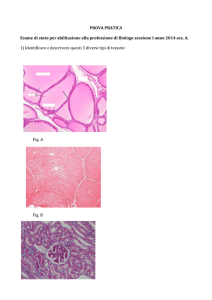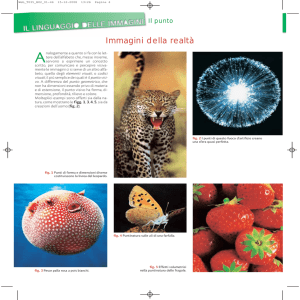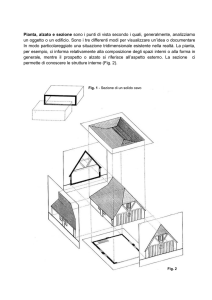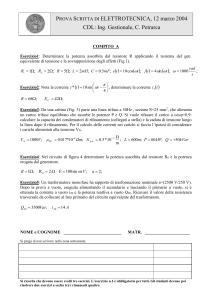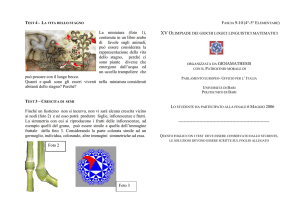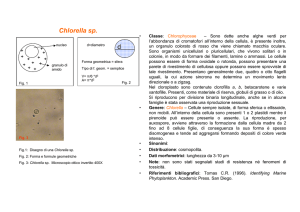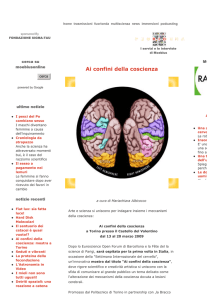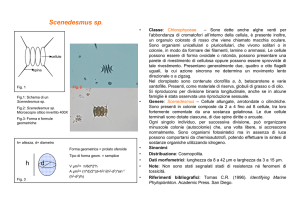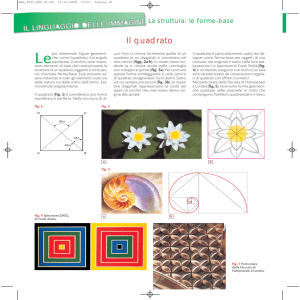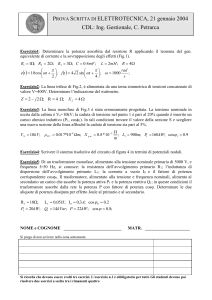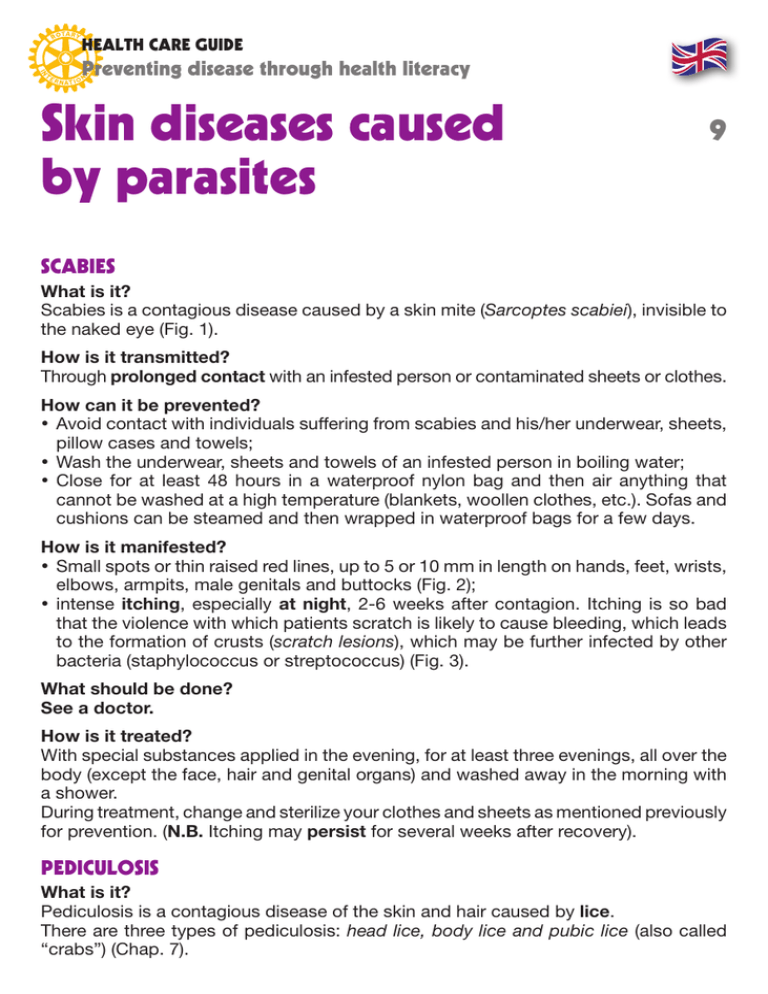
HEALTH CARE GUIDE
Preventing disease through health literacy
Skin diseases caused
by parasites
9
Scabies
What is it?
Scabies is a contagious disease caused by a skin mite (Sarcoptes scabiei), invisible to
the naked eye (Fig. 1).
How is it transmitted?
Through prolonged contact with an infested person or contaminated sheets or clothes.
How can it be prevented?
• Avoid contact with individuals suffering from scabies and his/her underwear, sheets,
pillow cases and towels;
• Wash the underwear, sheets and towels of an infested person in boiling water;
• Close for at least 48 hours in a waterproof nylon bag and then air anything that
cannot be washed at a high temperature (blankets, woollen clothes, etc.). Sofas and
cushions can be steamed and then wrapped in waterproof bags for a few days.
How is it manifested?
• Small spots or thin raised red lines, up to 5 or 10 mm in length on hands, feet, wrists,
elbows, armpits, male genitals and buttocks (Fig. 2);
• intense itching, especially at night, 2-6 weeks after contagion. Itching is so bad
that the violence with which patients scratch is likely to cause bleeding, which leads
to the formation of crusts (scratch lesions), which may be further infected by other
bacteria (staphylococcus or streptococcus) (Fig. 3).
What should be done?
See a doctor.
How is it treated?
With special substances applied in the evening, for at least three evenings, all over the
body (except the face, hair and genital organs) and washed away in the morning with
a shower.
During treatment, change and sterilize your clothes and sheets as mentioned previously
for prevention. (N.B. Itching may persist for several weeks after recovery).
Pediculosis
What is it?
Pediculosis is a contagious disease of the skin and hair caused by lice.
There are three types of pediculosis: head lice, body lice and pubic lice (also called
“crabs”) (Chap. 7).
How is it transmitted?
By touching hair or exchanging combs, hats, scarves, pillows or clothes with infested
individuals.
How can it be prevented?
• Avoid using the combs, brushes, hats, scarves and clothes of infested individuals;
• everyone who comes into contact with an infested individual should be examined
and treated, if necessary.
How is it manifested?
• Head lice: itching. The lice are grey and visible to the naked eye above all on the
hair on the nape of the neck and behind the ears. Their eggs adhere to the hair and
are also visible (Fig. 4, 5, 6).
• Body lice: itching. Small red dots on the shoulders, stomach and buttocks.
What should be done and how should it be treated?
See a doctor.
Head lice and their eggs can be removed from the hair with a comb and from the
eyelashes and eyebrows using tweezers (Fig. 7).
Use a shampoo based on various chemical substances (natural or synthetic). This
treatment must necessarily be repeated a week after the initial treatment.
In some cases, it is necessary to shave the hair, eyebrows, beard and all other hair.
For body lice wash the body thoroughly and always wear clean clothes and underwear.
Boil / dry clean / steam all combs, hats, underwear, sheets, mattresses, pillows,
blankets, clothes, etc.
SKIN DISEASE CAUSED BY MYCOSIS
Tinea (or Ringworm)
What is it?
The ringworm may be located on the scalp, skin of the body, groin and foot.
How is it transmitted?
Through contact with infested individuals or animals (cats, rabbits and dogs); by
exchanging clothes and personal hygiene utensils; walking barefoot in hotel rooms,
gyms, swimming pools, sports grounds and public toilets; wearing clothes and shoes
that do not allow the skin to breathe (heavy shoes with rubber soles).
How can it be prevented?
• Avoid walking barefoot in frequented public places;
• Avoid wearing very tight or synthetic clothing, shoes that can’t breathe, hot and
humid environments;
• Wash frequently;
• Avoid using napkins, towels, combs, razors and nail scissors belonging to infected
individuals.
How is it manifested?
• On the scalp: itching, greyish or reddish flaky spots; pus;
• On the body: itching and red spots, which get bigger;
• In the groin: red spots that tend to flake off. Itching and pain (Fig. 8);
• On the foot: the skin between the toes becomes macerated, turns red and gives off
a bad smell. Itching and pain.
What should be done and how should it be treated?
See a doctor.
Disinfect thoroughly all objects used by an infected individual in boiling water, or by
dry cleaning, with disinfectants and specially designed products.
Candidiasis
What is it?
Candidiasis is a widespread disease caused by Candida albicans. It is manifested on
the skin and in the mouth (“thrush”) (Fig. 9) or throat, oesophagus, intestine, bladder
and genitals (vagina, penis) (Chap. 7). It also strikes damp areas such as skin folds (in
the armpit, groin and under the breasts), the navel, the intergluteal cleft, the perianal
region, spaces between the fingers and toes (Fig. 10, 11). Here the skin often remains
damp due to sweat and is not exposed to the disinfecting action of the sunlight.
How is it transmitted?
Through direct contact with infected individuals or contaminated clothes.
How can it be prevented?
• Wash your hands thoroughly after touching infected individuals or objects;
• Keep your skin clean and dry by changing sanitary towels or incontinence pads
frequently (do NOT use sanitary towels or incontinence pads with plastic pants);
• Wash contaminated underwear in boiling water;
• Wear flip-flops in swimming pools and public showers.
How is it manifested?
• Red, damp plaque with a whitish border in the areas where the skin often remains
damp and is not exposed to the sun. Itching. In some cases, its gives off a bad smell;
• Swollen, red and painful fingernails and toe nails.
What should be done and how should it be treated?
See a doctor.
Following recovery, relapses are frequent.
Pityriasis versicolor
It is one of the most widespread forms of mycosis in countries with a tropical
climate. It is caused by the yeast “Malassezia furfur”, which normally lives on the skin
(saprophyte), preferably in areas with a high density of sebaceous glands.
How is it transmitted?
It is not very contagious. For its growth it requires some special conditions (profuse
sweating, poor personal hygiene, etc.).
How can it be prevented?
Through good personal hygiene in individuals with greasy skin.
How is it manifested?
The most common sites are the upper part of the trunk, the neck and the upper limbs.
The lesions may spread in time and merge together making the skin look like a map
(Fig. 12). It generally gives no symptoms; some patients with particularly widespread
forms may suffer itching.
What should be done and how should it be treated?
See a doctor.
Following recovery, relapses are frequent.
GUIDA SANITARIA
Alfabetizzare per prevenire le malattie
Malattie della pelle
da parassiti
9
Scabbia
Che cos’è?
La scabbia è una malattia contagiosa causata da un acaro della pelle (Sarcoptes scabiei), invisibile a occhio nudo (Fig. 1).
Come si trasmette?
Tramite contatti prolungati con una persona infestata o con lenzuola e indumenti
contaminati.
Come si previene?
•Evitare il contatto con una persona affetta da scabbia e con la sua biancheria personale, le sue lenzuola, le sue federe e gli asciugamani;
•lavare con acqua bollente la biancheria personale, da letto e da bagno di una persona già infestata;
•chiudere per almeno 48 ore in un sacco impermeabile di nylon e, poi, esporre all’aria
ciò che non può essere lavato ad alte temperature (coperte, capi in lana, ecc.). Divani e cuscini possono essere lavati a vapore e, poi, avvolti in sacchi impermeabili per
alcuni giorni.
Come si manifesta?
•Piccole chiazze o sottili linee rosse in rilievo, lunghe fino a 5 o 10 mm su mani, piedi,
polsi, gomiti, ascelle, genitali maschili, glutei (Fig. 2);
•prurito intenso, specialmente notturno, dopo 2-6 settimane dal contagio. Il fastidio
è tanto insopportabile che il paziente, grattandosi eccessivamente, finisce per ferirsi
la pelle con comparsa di croste (lesioni da grattamento), che possono ulteriormente
essere infettate da altri batteri (stafilococco o streptococco) (Fig. 3).
Che cosa fare?
Rivolgersi al medico.
Come si cura?
Con apposite sostanze che vanno applicate alla sera, per almeno tre sere, su tutto il
corpo (tranne viso, capelli e organi genitali) e tolte alla mattina con una doccia.
Durante il trattamento cambiare e sterilizzare gli indumenti e le lenzuola come già
detto a proposito della prevenzione. (N.B. Il prurito può rimanere anche diverse settimane dopo la guarigione).
Pediculosi
Che cos’è?
La pediculosi è una malattia contagiosa della pelle e dei capelli, causata da pidocchi.
Ci sono tre tipi di pediculosi: del capo, del corpo, del pube (la cosiddetta “piattola”)
(Cap. 7).
Come si trasmette?
Toccandosi i capelli o scambiandosi pettini, cappelli, sciarpe, cuscini o vestiti con
persone già infestate.
Come si previene?
•Evitare di usare pettini, spazzole, cappelli, sciarpe e indumenti di persone già infestate;
•tutte le persone entrate in contatto con un soggetto infestato devono essere controllate ed eventualmente curate.
Come si manifesta?
Pediculosi del capo: prurito. Il pidocchio è grigio e visibile ad occhio nudo soprattutto
sui capelli della nuca e dietro le orecchie. Anche le uova sono visibili, attaccate ai capelli (Fig. 4, 5, 6).
Pediculosi del corpo: prurito. Piccole punture rosse su spalle, addome e glutei.
Che cosa fare e come si cura?
Rivolgersi al medico.
In caso di pediculosi del capo i pidocchi e le uova possono essere tolti dai capelli con
un pettine e da ciglia e sopracciglia con pinzette (Fig. 7).
Associare uno shampoo a base di varie sostanze chimiche (naturali o sintetiche). Tale
trattamento deve essere assolutamente ripetuto dopo 1 settimana dalla sua prima
esecuzione.
A volte è necessario radere completamente capelli, sopracciglia, barba e peli.
Per la pediculosi del corpo lavarsi bene il corpo e indossare sempre biancheria e vestiti puliti. Quanto a pettini, cappelli, biancheria intima, lenzuola, materassi, cuscini,
coperte, vestiti, ecc: bollire / lavare a secco / stirare a vapore.
MALATTIE DELLA PELLE DA MICOSI
Tinea (o Tigna)
Che cos’è?
La tigna può localizzarsi al cuoio capelluto, alla pelle del corpo, all’inguine e al piede.
Come si trasmette?
Per contatto con persone già infestate o animali (gatti, conigli, cani); con lo scambio di
vestiti e oggetti per la pulizia personale; camminando a piedi scalzi in camere d’albergo, palestre, piscine, impianti sportivi e impianti igienici collettivi; indossando vestiti e
scarpe che non lasciano traspirare la pelle (scarpe robuste con suole di gomma).
Come si previene?
•Non camminare scalzi in ambienti molto frequentati dal pubblico;
•evitare: vestiti molto stretti o sintetici, scarpe poco traspiranti, ambienti caldo-umidi;
•lavarsi spesso;
• non usare tovaglioli, salviette, pettini, limette o forbicine per unghie di persone già infette.
Come si manifesta?
•Sul cuoio capelluto: prurito, chiazze grigiastre o arrossate che si desquamano; pus;
•sul corpo: prurito e macchie arrossate, che si ingrandiscono;
•all’inguine: chiazze arrossate, che tendono a desquamarsi. Prurito e dolore (Fig. 8);
•al piede: la pelle tra le dita si macera, si arrossa e ha cattivo odore. Prurito e dolore.
Che cosa fare e come si cura?
Rivolgersi al medico.
Disinfettare bene tutti gli oggetti utilizzati da una persona infetta con bollitura, lavatura
a secco, disinfettanti e prodotti appositi.
Candidosi
Che cos’è?
La candidosi è una malattia molto diffusa, causata dalla Candida albicans. Si manifesta a carico della pelle o della bocca (“mughetto”) (Fig. 9) o di gola, esofago, intestino,
vescica urinaria e genitali (vagina, pene) (Cap. 7). Colpisce anche le aree danneggiate
dall’umidità come le pieghe cutanee (ascellari, inguinali e sottomammarie), l’ombelico, il solco intergluteo, la regione perianale, gli spazi interdigitali delle mani e dei piedi
(Fig. 10, 11). Ivi la pelle rimane spesso umida per il sudore e non è esposta all’azione
disinfettante della luce solare.
Come si trasmette?
Attraverso contatto diretto con persone infette o indumenti contaminati.
Come si previene?
•Lavarsi bene le mani dopo aver toccato persone od oggetti infetti;
•tenere la pelle pulita ed asciutta cambiando spesso pannolini o pannoloni (NO a
pannolini o pannoloni con mutandine di plastica);
•lavare la biancheria infetta con acqua bollente;
•calzare ciabatte nelle piscine o docce pubbliche.
Come si manifesta?
•Con placche arrossate, umide, con un bordo biancastro nelle zone dove la pelle
rimane spesso umida e non è al sole. Prurito. A volte c’è cattivo odore;
•alle unghie di mani e piedi: gonfiore, rossore e dolore.
Che cosa fare e come si cura?
Rivolgersi al medico.
A guarigione avvenuta, le recidive sono frequenti.
Pityriasis versicolor
È una delle micosi più diffuse soprattutto nei paesi con climi tropicali. Responsabile
è la “Malassezia furfur”, che vive normalmente sulla pelle (saprofita), prediligendo le
zone ove è maggiore la densità di ghiandole sebacee.
Come si trasmette?
È pochissimo contagiosa. Richiede per il suo sviluppo qualche condizione speciale
(facile sudorazione, scarsa igiene personale, ecc.).
Come si previene?
Mediante un’accurata igiene personale negli individui con pelle molto grassa.
Come si manifesta?
Sedi di predilezione sono la parte superiore del tronco, il collo e gli arti superiori. Le
lesioni possono nel tempo estendersi e confluire conferendo alla pelle il tipico aspetto
a “carta geografica” (Fig. 12). In genere, è assente qualsiasi sintomatologia; alcuni
pazienti, affetti da forme molto estese, possono lamentare prurito.
Che cosa fare e come si cura?
Rivolgersi al medico.
A guarigione avvenuta, le recidive sono frequenti.
Fig. 1 - Scabies mite
(Sarcoptes scabiei).
Fig. 1 - Acaro della
scabbia (Sarcoptes
scabiei).
Fig. 2 - Scabies. Most frequent skin locations.
Fig. 2 - Scabbia. Localizzazioni cutanee più
frequenti.
Fig. 3 - Scabies. Skin lesions caused by scratching.
Fig. 3 - Scabbia. Lesioni cutanee da grattamento.
Fig. 5 - Head louse or
pediculus humanus
capitis.
Fig. 4 - Pediculosis capitis. The parasites can be
seen in the hair.
Fig. 4 - Pediculosi del cuoio capelluto. Si notano i
parassiti tra i capelli.
Fig. 5 - Pidocchio o
pediculus humanus
capitis.
Fig. 6 - Dropletshaped head louse
egg (nit) firmly
attached to a hair.
Fig. 6 - Uovo di
pidocchio a forma di
goccia (lendine), che è
strettamente adeso a
un capello.
Fig. 7 - Eyelash lice.
Fig. 8 - Tinea cruris on the inner thigh.
Fig. 7 - Pediculosi delle ciglia (cortesia Prof. C.
Balacco Gabrieli).
Fig. 8 - Tinea cruris a livello della superficie interna
della coscia.
Fig. 9 - Oral candidiasis (glossitis).
Fig. 10 - Candidiasis of submammary folds.
Fig. 9 - Candidosi della lingua (glossite).
Fig. 10 - Candidosi delle pieghe cutanee
sottomammarie.
Fig. 11 - Candidiasis between the toes.
Fig. 12 - Pityriasis versicolor of the back.
Fig. 11 - Candidosi del piede nel solco
interdigitale.
Fig. 12 - Pityriasis versicolor del dorso.
COMUNE DI PAVIA
Club Pavia Ticinum
Anno Rotariano 2013-2014
ASSESSORATO ALLA CULTURA,
TURISMO, PROMOZIONE DELLA CITTÀ,
MARKETING TERRITORIALE
E RAPPORTI CON L’UNIVERSITÀ
UNIVERSITÀ
DI PAVIA
Ordine dei Medici Chirurghi e degli Odontoiatri
della Provincia di Pavia
www.rotary2050.net/alfabetiperlasalute

